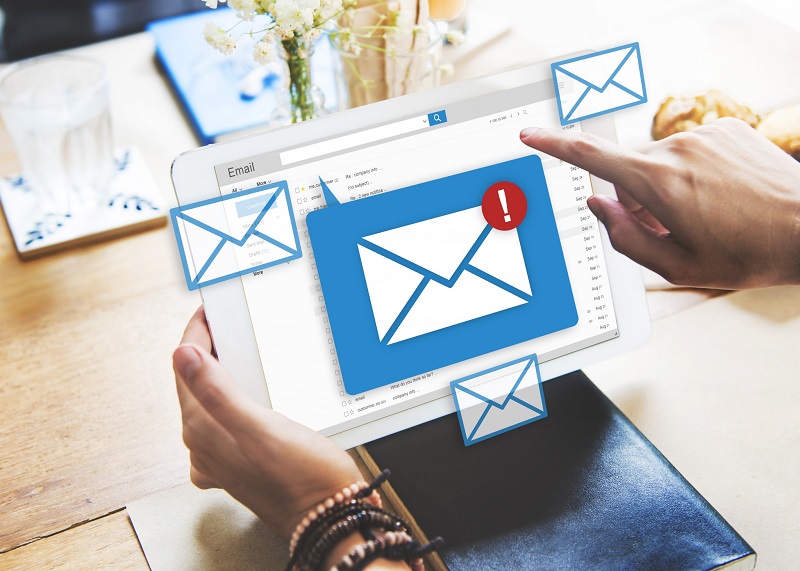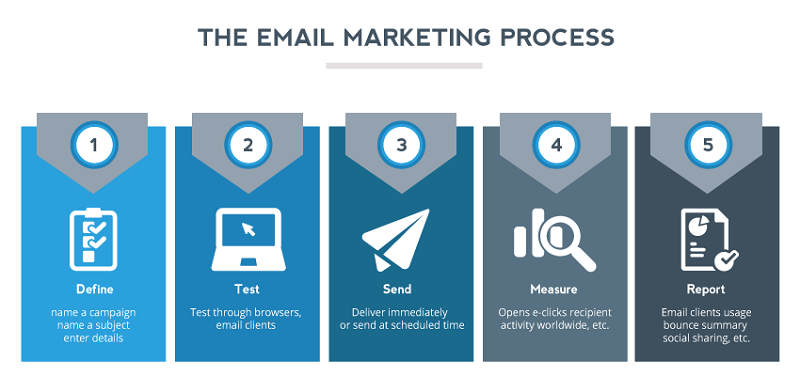Email sending is an excellent tool for effective communication with customers. With the help of mailings, companies can increase sales, retain customers, receive feedback from them, respond quickly to their needs, etc. But it’s important to remember that the ability to use this tool is determined not only by the number of clicks and the percentage of open ability. The effectiveness of the mailing is estimated first of all by the involvement of users and their response actions.
Here in BSOinvest we have five important rules that will help improve the effectiveness of email distribution …
#1 – Each mailing must have a specific goal
This is the first and main question that you should ask yourself before opening the mail client’s admin area. Each letter that you intend to send to your client must have a clear and understandable purpose – this may be an attempt to induce people to log in to your site, subscribe to a new tariff plan, use a special offer, get a discount, etc.
Understanding what you want to achieve with your mailing and what response you expect from your users is absolutely necessary to understand the real impact of the letter on the audience.
Realizing the ultimate goal of the mailing, it is easier and more accurate to evaluate its effectiveness. If you set out to lead new leads – to track how many new leads you got in the end, it will not be difficult. Achievement of most specific goals can be assessed and measured – it does not matter whether it’s a single newsletter or a big promotional campaign. It is extremely important to understand, whether you do, what needs to be corrected and how to fix it.
#2 – The letter should be targeted
The value of sincere and personalized communication is difficult to overestimate, and you should always keep this in mind. Regardless of the goal that you seek to achieve with your mailing list, you can distinguish five key characteristics that any of your letters to the user should match. Doing a dispatch ignoring these characteristics means spending your time in vain.

- Address personally to each client: It’s just fine if you know all of your users by name. In this case, the task becomes very simple: start a letter with a greeting like “Hello, Alex”, but do not allow a foolish and for some reason still encountered error – “Good morning, Alex Murphy”, because “real” people do not talk like that. If you are less fortunate and you do not know all of your users or subscribers by name, do not forget to say hello. In addition to the personalized greeting, you can and often need to use in-app chat or plain text. Yes, plain text in terms of design is much inferior to HTML imposition, but sometimes this is what allows to achieve the result. These formats cannot be ignored for a very simple reason – they do not look like advertising and are perceived as more personal. Such letters often give more involvement than those that were obviously created for thousands of people.
- Keep track of relevance and timeliness: Make sure that each email you send is targeted, specific, and is appropriate for the clients to whom it is addressed. If this is not the case, most likely the letter will go straight to the trash.
- Be polite: Using the CAPS LOCK button is a cry, and screaming, as well as abuse of professional jargon, are signs of insincerity.
- Use the appropriate tone and manner of expressing ideas.
- Bring the essence clearly and quickly: Remember that your users have other things besides your mailing. Respect their time and help them extract everything useful from your letter as quickly as possible.
#3 – Newsletters should be segmented
A letter with an undetermined circle of recipients is doomed to failure with a high degree of probability. The key to effective communication with customers is, among other things, the creation of meaningful segments – groups of recipients formed on some basis.
Segmentation of the database begins with thoughts about specific users, and not about the database as a whole. In particular, it makes sense to segment users based on their activity. For example, if you want to encourage your customers to try some kind of service, it’s more logical to make a mailing with the offer of this service only for those who have not tried it yet, than for those who already use it.
Customers stop using your product for many different reasons. This category – inactive users – can be segmented according to their previous activity. And they can be sent relevant letters about what new options or products your company can offer for them. After all, it is quite possible, without stopping to use what you offer, they simply do not know about your new opportunities.
In fact, the segments of your mailing list can be very different: you can divide users into those who use your free options (if any) and to premium subscribers, dedicated users and those who are in the base of your mailing for the first time.
#4 – Do not make newsletters too often
There are many temporary aspects that you should pay special attention to, but first of all you need to take into account the time of day when you send the letter, and the frequency of mailings.

Time of day: For different types of mailing, it will be different. If you work in the B2B market, then most likely the best time for your mailing will be a period from 10 to 11 hours. If you specialize in newsletters with content for reading, then evening time is preferable to the morning.
Actually, the morning is the most controversial time in order to achieve high involvement. Most people do open the mail in the morning, often without even getting out of bed. But let’s think about what they do with all the letters stuffed with the box? Quickly run through the eyes on the list, archive or ignore the irrelevant, open and read the most urgent, and leave all the others undiscovered until they come to work, and then how it goes.
Frequency of mailings: If you make newsletters too often, subscribers will stop working for you, and this is at best. At worst, they will begin to tag your messages as spam, which is very bad, because the more recipients mark your message as spam, the more likely that the mail service will consider all your letters as such.
One recent study of user attitudes toward email marketing showed that 44% of respondents would like to receive fewer letters from companies and brands, and 46% admitted that if such letters arrive too often, they mark them as spam.
#5 – Think about where and under what circumstances, users will see your newsletter
This is the case when the context decides everything. The way your letter is perceived by users depends heavily on where people will be physically located when they receive it (office, metro, house, park) and on what device they see it (desktop or smartphone). Take the possible scenarios seriously, because the effectiveness of mailing depends on this.
- If you are so desperate that you still send your letter early in the morning, then bear in mind that it cannot withstand competition with the distracting factors of the real world – such as children, news, social networks, etc. You cannot expect users to make any particularly meaningful behavior in the morning.
- In-app mailings (notifications in applications that come only when the user is inside the application) work much better and never fall out of context. They are particularly appropriate during the whole evening or during dinner, in addition are equally effective on the desktop, and on mobile devices.
- Push notifications are best sent when people use mobile, not desktops. Brands try to send such notices during the working day, but the analysis of a large amount of data showed that the highest open ability of the push in general after 6 pm. So it’s most efficient to send them between 6 and 8 pm.

